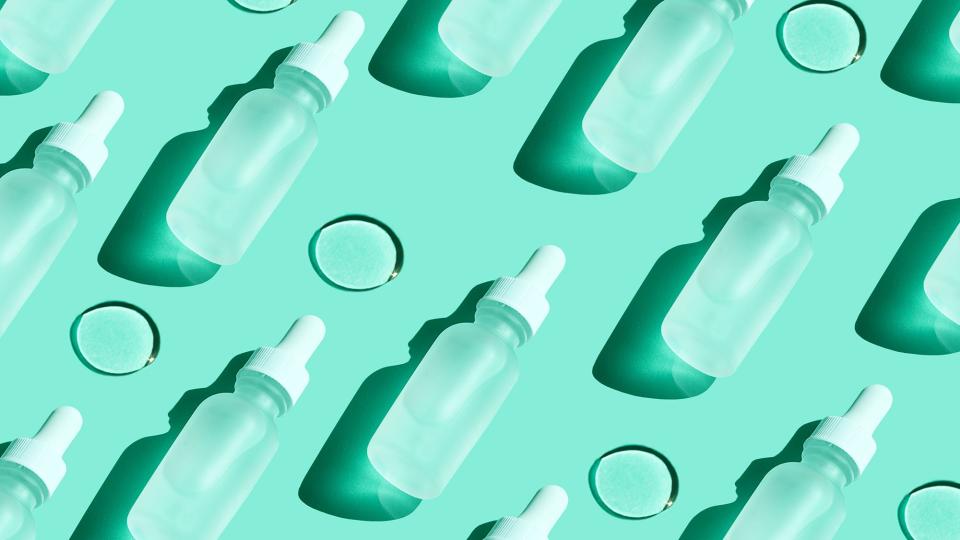Meet Salicylic Acid, the Anti-Aging Ingredient That Also Battles Breakouts
Everything you need to know about the popular skincare ingredient salicylic acid.

Imagine a skincare ingredient that could benefit both teenagers and their moms.
Actually, you don't have to. People in both age groups are already reaching for face washes, gels, and creams with salicylic acid, a colorless, organic compound that smooths skin and unclogs pores. Because everyone deserves to put their best face forward, we asked aestheticians and dermatologists how salicylic acid can improve complexion and safeguard against breakouts.
The Power of Salicylic Acid
One of salicylic acid's superpowers is that it can penetrate the sebum (an oily, protective barrier on your skin). Too much sebum clogs pores, causing breakouts and blackheads. Salicylic acid can be absorbed into those pores, unclogging them and cleaning out the bacteria that lead to breakouts. "When used regularly, salicylic acid can decrease the frequency and severity of acne eruptions," says Leslie Baumann, a professor of dermatology at the University of Miami.
But salicylic acid also does something else inside your pores: It exfoliates dead skin cells, which diminishes the appearance of fine lines. And it promotes collagen growth, which might improve the skin's elasticity, though further research is needed.
One caveat: Avoid it if you have dry or sensitive skin or an allergy to aspirin. (It's in the same family as the pain reliever.)
How Salicylic Acid Works
The fast-acting acid is best known for treating common acne that's caused by clogged pores, especially for people with oily or combination skin. But salicylic acid can do so much more than just dry up pimples, says Dr. Jennifer Segal of Metropolitan Dermatology Institute in Houston. "It can treat a variety of conditions, including acne, warts, dry skin, and even dandruff."
Products Containing Salicylic Acid
Salicylic acid face washes, such as Dermalogica Clearing Skin Wash, prevent breakouts before they start by dissolving oil, dirt, and other debris. But, if your acne or breakout is severe enough that you want to treat it around the clock, salicylic acid gels are ideal. The consistency of spot treatments like Alba Botanica Anecdote Maximum Strength Invisible Treatment Gel is generally lightweight enough to be worn under makeup and can be applied to clean skin overnight.
Salicylic acid spot treatments can actually improve or even eliminate pimples overnight. (Yes, really.) However, that depends on the severity of your breakout, and as a general rule, spot treatments should only be used when necessary.
Salicylic Acid and Skin Types
Salicylic acid is ideal for oily or combination skin types, but it also works well for those with normal skin who experience the occasional breakout. If you have dry or sensitive skin, steer clear of the acid, as your pores may become too agitated with use.
As with any skincare ingredient, it's important to exercise caution when using salicylic acid. While it really gets the skin-clearing job done, the ingredient can have adverse side effects, such as minor skin irritation, rashes, or peeling. Don't apply too much product until you know how your skin will react. And don't apply it to skin that's already irritated or sunburned.
"Make sure that the other products in your routine, such as your cleanser, moisturizer, and sunscreen, are gentle and soothing," says Dr. Segal.
While it's extremely rare, salicylic acid can cause a serious allergic reaction among some users. See a doctor if you have itching, hives, light-headedness, and swelling. It's also not an appropriate treatment for every type of acne. "If acne vulgaris (common acne) is confused with acne rosacea (breakouts in sensitive skin), using salicylic acid only further irritates the skin and worsens rosacea," Dr. Segal warns.
For more Real Simple news, make sure to sign up for our newsletter!
Read the original article on Real Simple.

